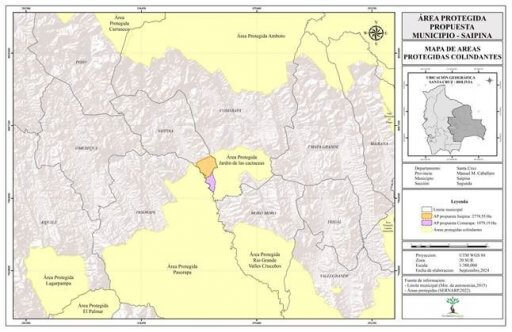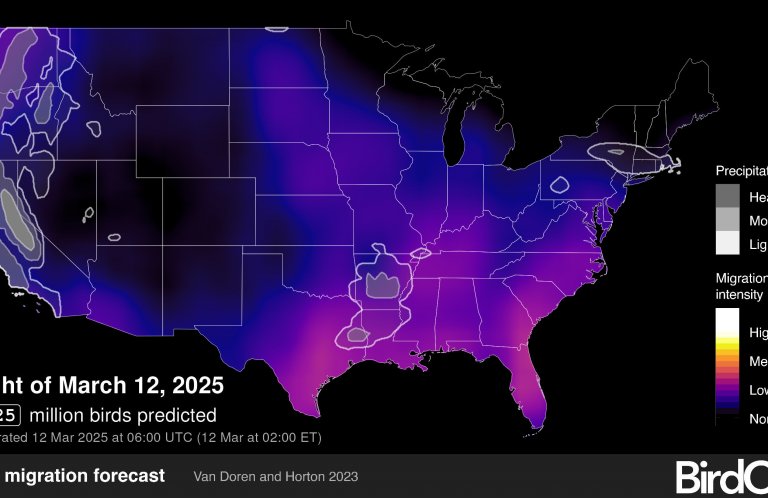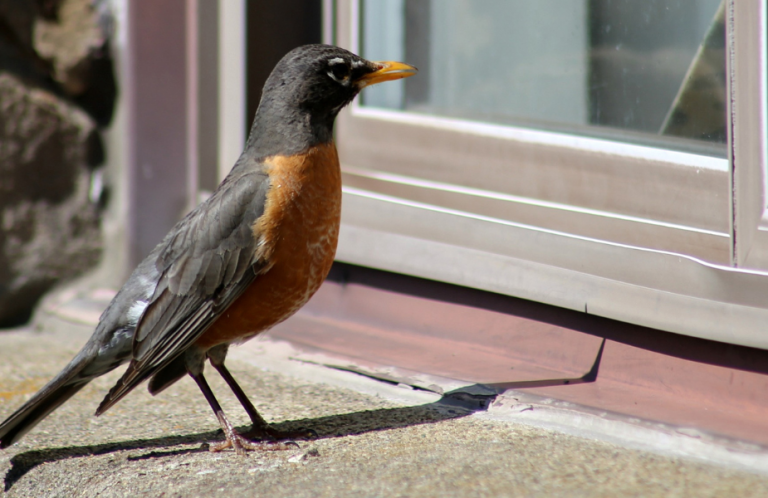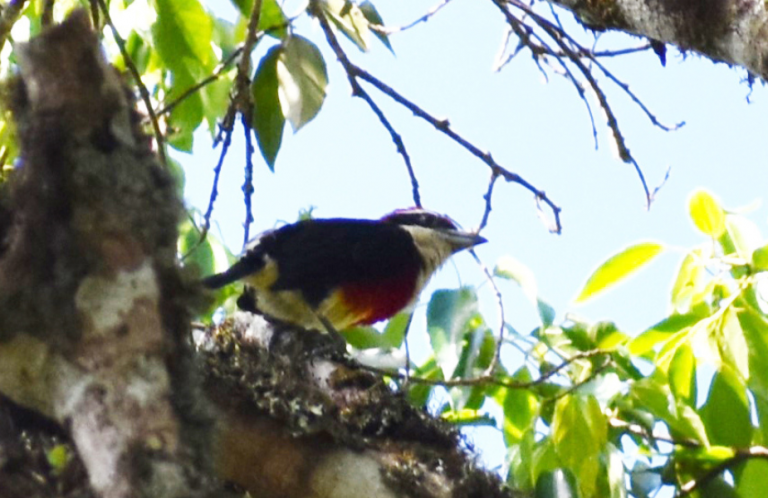Saipina and Comarapa: New Municipal Reserves that Protect the Red-fronted Macaw
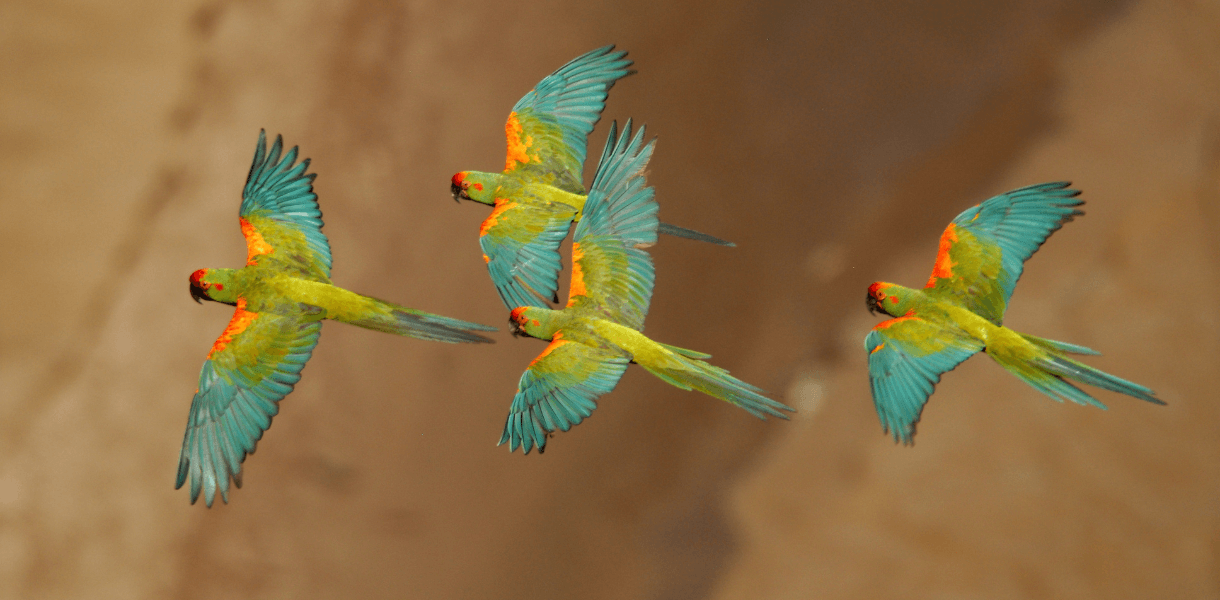
Two new municipal protected areas have been created in Bolivia: the Saipina–Red-fronted Macaw Wildlife Reserve (6,864 acres) and the Comarapa–Red-fronted Macaw Wildlife Reserve (2,666 acres), with a total of 9,530 acres that directly benefit local communities and ensure the conservation of the Red-fronted Macaw (Ara rubrogenys), an endemic and Critically Endangered species.
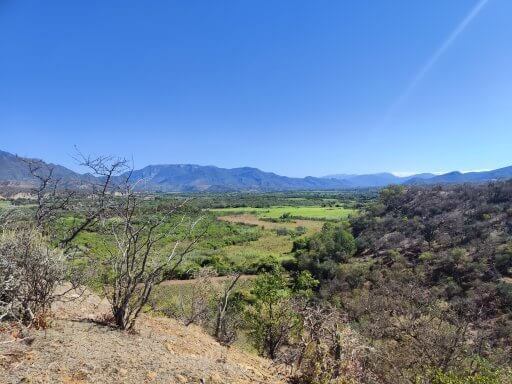
The process of creating these reserves is led by American Bird Conservancy (ABC) and Conserva Aves partner Natura Bolivia, and has the active commitment of more than 50 local actors from the communities of Anamal, La Junta, and La Estancia in the department of Santa Cruz, who have committed to protecting the macaw and its habitat.
Saipina and Comarapa are the first reserves officially declared as Wildlife Reserves in Bolivia under Conserva Aves. Conserva Aves is a hemispheric conservation initiative led by ABC, Audubon, BirdLife International, Birds Canada, and the Network of Environmental Funds of Latin America and the Caribbean (RedLAC), with support from the Bezos Earth Fund, as well as additional funding from the Bobolink Foundation for the designation of these areas. The initiative is supporting several organizations in the creation of multiple subnational protected areas in Bolivia through calls for proposals and direct investments.
The reserves strengthen the biological corridor of the Inter-Andean Dry Valleys, connecting other key areas, such as the Pasorapa Integrated Natural Management Area (ANMI in Spanish), the Lagarpampa – Mollepampa ANMI in Cochabamba, the El Palmar ANMI in Chuquisaca, the Municipal Protected Area Jardín de Cactáceas de Bolivia, and the Río Grande – Valles Cruceños ANMI.
This conservation network connects habitats essential for the region's biodiversity and mitigates forest loss caused by agricultural expansion, grazing, and deforestation by establishing a legal framework for the conservation and sustainable management of the territory. At the same time, they protect other important species, such as the Andean Condor (Vultur gryphus), classified as Vulnerable, and the Cliff Parakeet (Myiopsitta luchsi), an endemic species with restricted distribution.
In 2021, Natura Bolivia and Asociación Armonía, another ally of ABC and Conserva Aves, promoted a national census of the macaw that established that the global population of the species is 1,160. During this census, nesting areas were located that were crucial for the location of the new reserves.
The Red-fronted Macaw is one of ABC's priority species, and for nearly two decades it has been supporting various projects to conserve its habitat, including the creation of the ANMI Pasorapa and Lagarpampa and support for infrastructure and management of the Red-fronted Macaw Reserve managed by Asociación Armonía. ABC is also supporting Natura Bolivia and the municipalities involved, both in the Comarapa and Saipina reserves, as well as the AMNI Pasorapa and Lagarpampa, to strengthen operations and technical capacities through the Latin American Reserve Stewardship Initiative, funded by March Conservation Fund.
The reserves promote local development through mechanisms such as Reciprocal Biodiversity Agreements (ARA), a Natura Bolivia program that encourages the conservation of the species and its habitat, promoting community participation through benefits such as irrigation systems, access to water, and sustainable production systems. In addition, the municipal governments of Saipina and Comarapa, as the main parties responsible for safeguarding natural resources and biodiversity, also contribute to environmental conservation and education, ensuring ecological balance and controlling environmental pollution. These initiatives open up opportunities for ecotourism, highlighting the natural attractions of the region and generating income for local communities.
Adapted from original article by Natura Bolivia.
Saipina y Comarapa: Nuevas Reservas Municipales que Protegen la Paraba Frente Roja
En Bolivia nacen dos nuevas áreas protegidas municipales: la Reserva de Vida Silvestre Saipina – Paraba Frente Roja (2,778 hectáreas) y la Reserva de Vida Silvestre de Comarapa – Paraba Frente Roja (1,079 hectáreas), con un total de 3,857 hectáreas que benefician directamente a las comunidades locales y aseguran la conservación de la Paraba Frente Roja (Ara rubrogenys), una especie endémica y en peligro crítico de extinción.
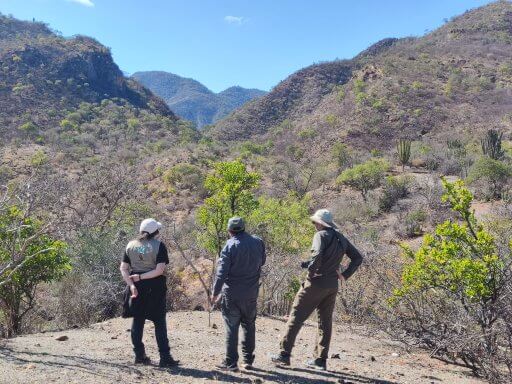
El proceso de creación de estas reservas es liderado por Natura Bolivia (uno de los aliados de American Bird Conservancy en Bolivia) y cuenta con el compromiso activo de más de 50 actores locales de las comunidades de Anamal, La Junta y La Estancia en el departamento de Santa Cruz, quienes se han comprometido a proteger a la Paraba y su hábitat.
Las reservas fortalecen el corredor biológico de los Valles Secos Interandinos, conectando otras zonas clave, como el Área Natural de Manejo Integrado (ANMI) Pasorapa, el ANMI Lagarpampa – Mollepampa en Cochabamba, el ANMI El Palmar en Chuquisaca, el Área Protegida Municipal Jardín de Cactáceas de Bolivia y el ANMI Río Grande – Valles Cruceños. Esta red de conservación conecta hábitats esenciales para la biodiversidad de la región y mitigan la pérdida de bosques causada por la expansión agrícola, el pastoreo y la deforestación al establecer un marco legal para la conservación y el manejo sostenible del territorio. A su vez, protegen otras especies importantes, como el Cóndor Andino (Vultur gryphus) clasificado como vulnerable (VU), y la Lorita Boliviana (Myiopsitta luchsi), una especie endémica con distribución restringida.
Saipina y Comarapa son las primeras reservas oficialmente declaradas como Reservas de Vida Silvestre en Bolivia bajo Conserva Aves. Conserva Aves es una iniciativa de conservación hemisférica liderada por ABC, Audubon, BirdLife International, Birds Canada y la Red de Fondos Ambientales de Latinoamérica y el Caribe (RedLAC), con el apoyo de Bezos Earth Fund y fondos adicionales de Bobolink Foundation para la designación de estas reservas. La iniciativa está apoyando a varias organizaciones en la creación de diez áreas protegidas subnacionales en Bolivia.
En 2021, Natura Bolivia y Asociación Armonía, otro aliado de ABC y Conserva Aves, impulsaron un censo nacional de la paraba con el cual se estableció que la población global de la especie es de 1,160. Durante este censo, se localizaron zonas de anidación que fueron cruciales para la localización de las nuevas reservas.
La Paraba Frente Roja es una de las especies prioritarias para ABC, por lo cual, por casi dos décadas viene apoyando distintos proyectos para conservar su hábitat, incluyendo la creación de las ANMI Pasorapa y Lagarpampa y apoyo para infraestructura y gestión de la Reserva Paraba Frente Roja manejada por Asociación Armonía. ABC también está apoyando a Natura Bolivia y a las municipalidades involucradas, tanto de las reservas de Comarapa y Saipina, como de las ANMI Pasorapa y Lagarpampa para fortalecer operaciones y capacidades técnicas a través del Latin American Reserve Stewardship Initiative, financiado por March Conservation Fund.
Las reservas impulsan el desarrollo local mediante mecanismos como los Acuerdos Recíprocos por Biodiversidad (ARA), que incentiven la conservación de la especie y su hábitat, fomentando la participación comunitaria a través de beneficios como sistemas de riego, acceso al agua y sistemas productivos sostenibles. Además, los gobiernos municipales de Saipina y Comarapa, como principales responsables de precautelar los recursos naturales y la biodiversidad, también contribuyen a la conservación y educación ambiental, garantizando el equilibrio ecológico y el control de la contaminación ambiental. Estas iniciativas abren oportunidades para el ecoturismo, destacando los atractivos naturales de la región y generando ingresos para las comunidades locales.
Adaptado de artículo publicado por Natura Bolivia.





































